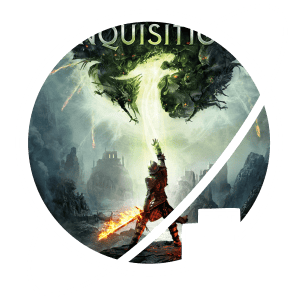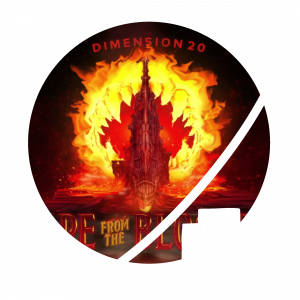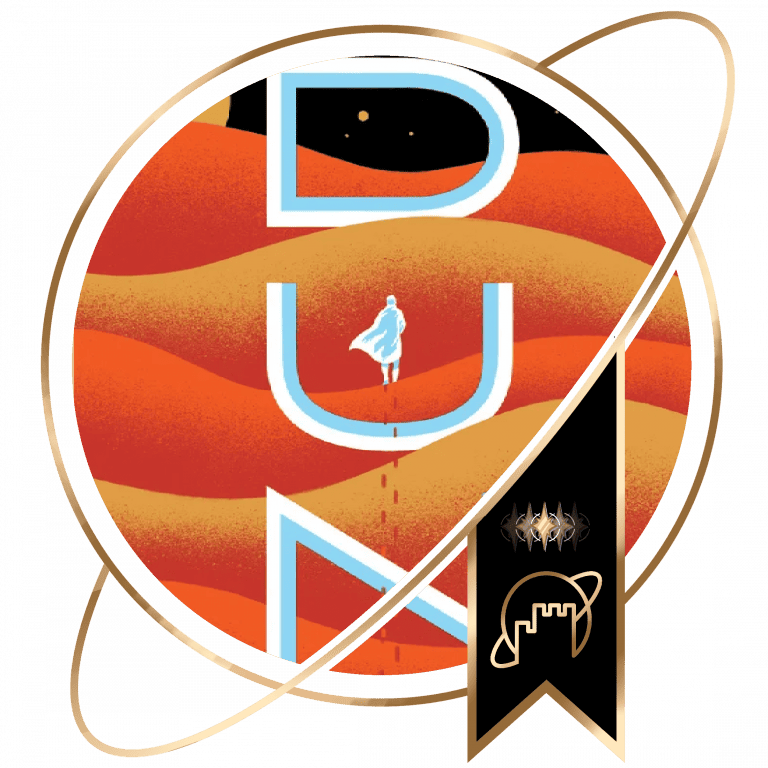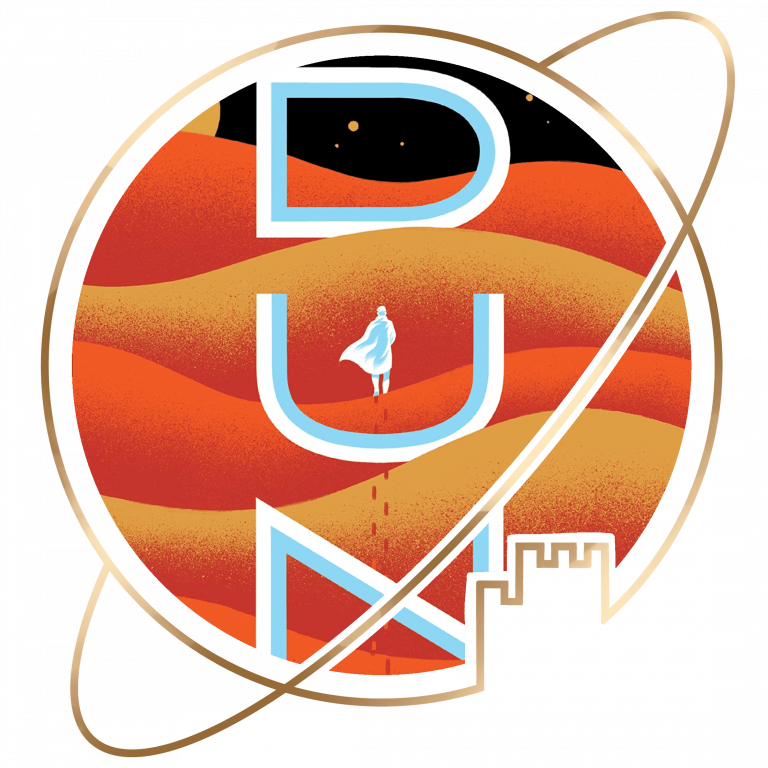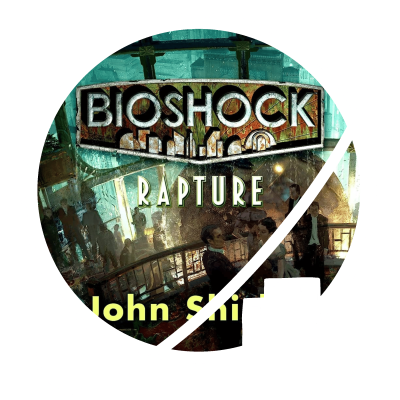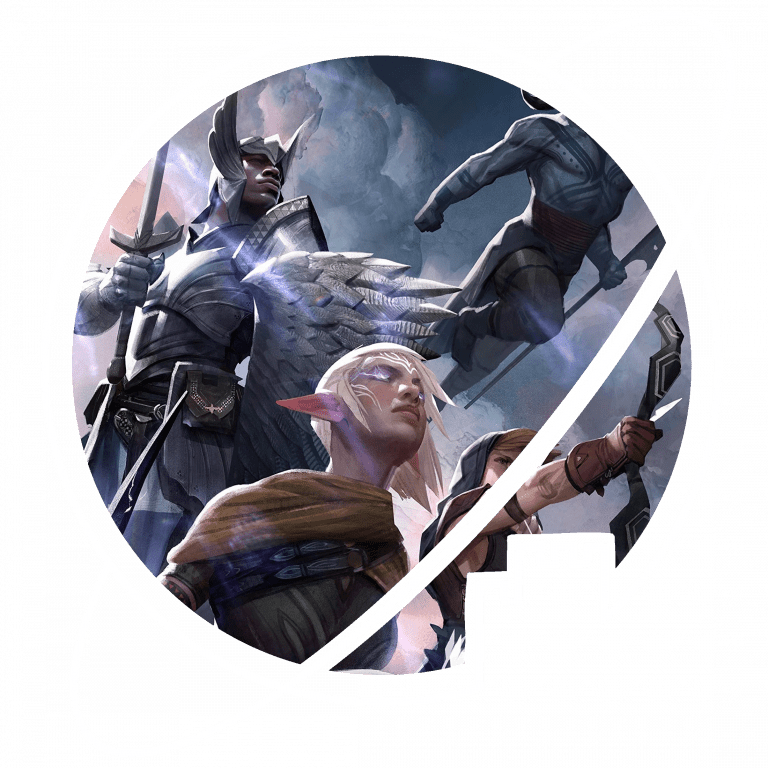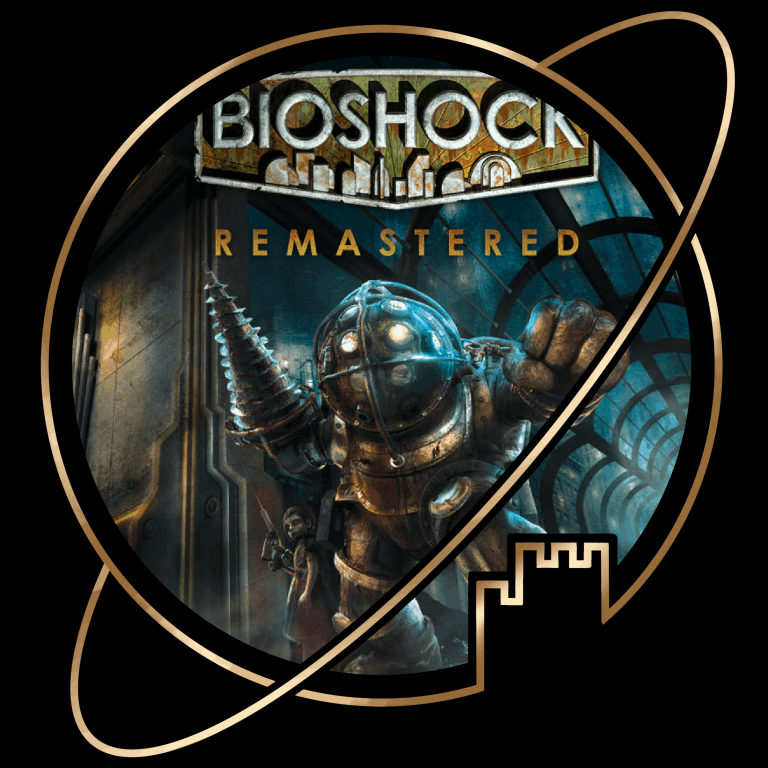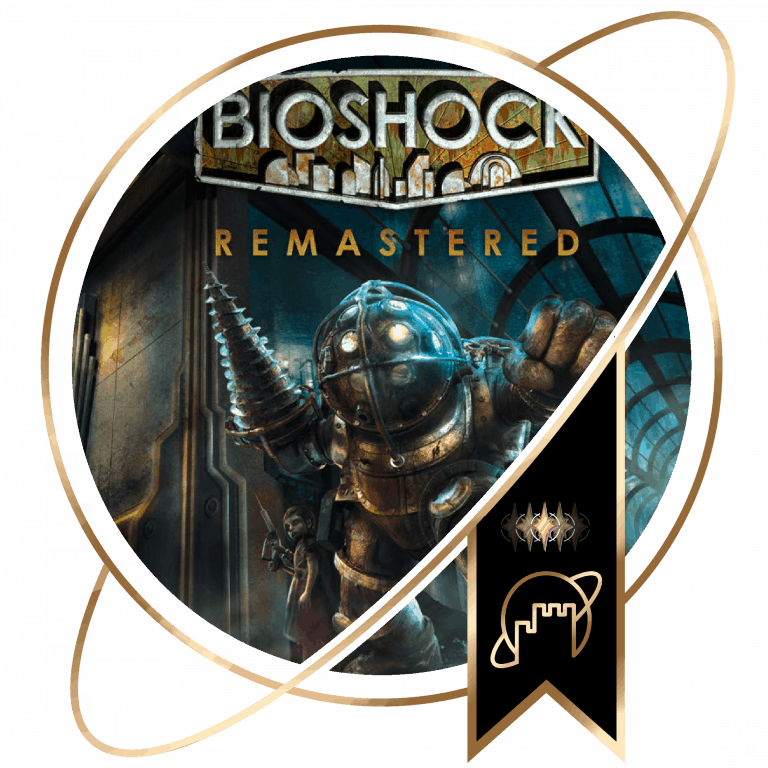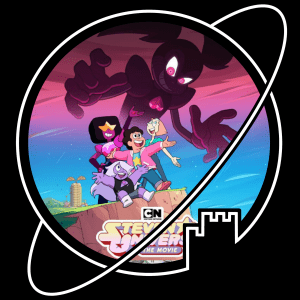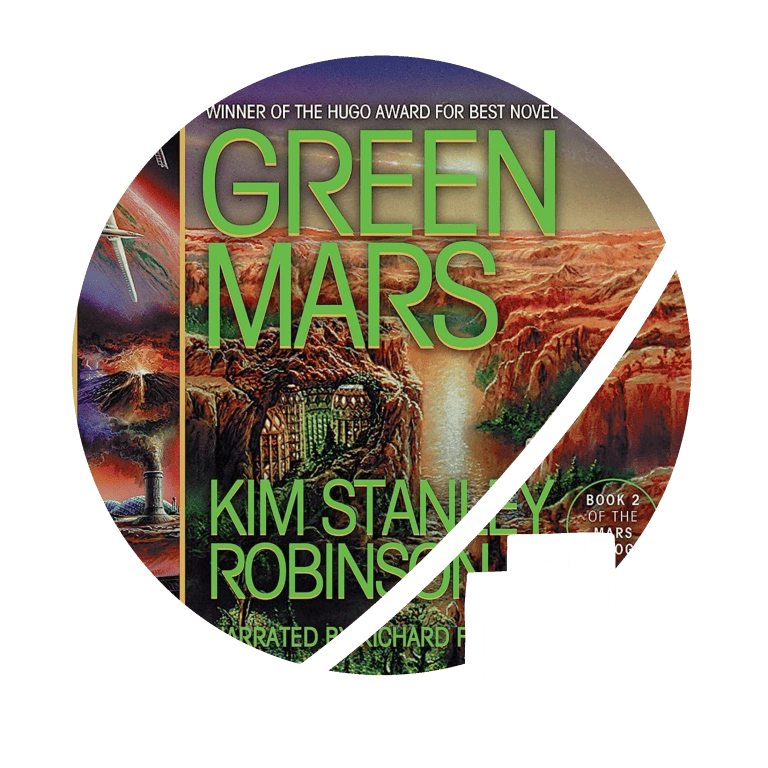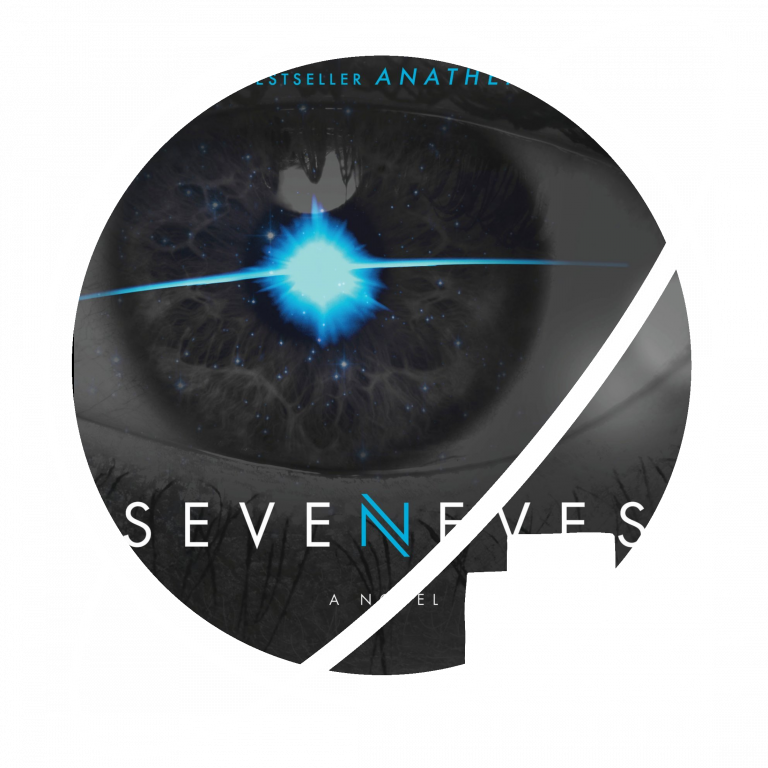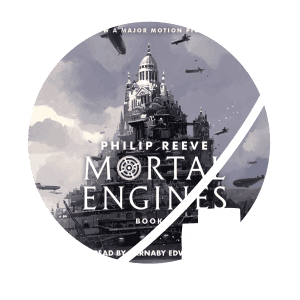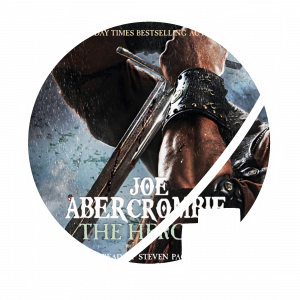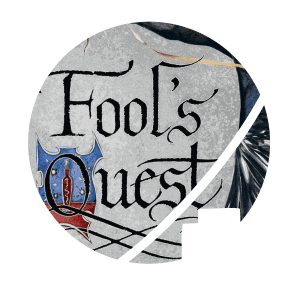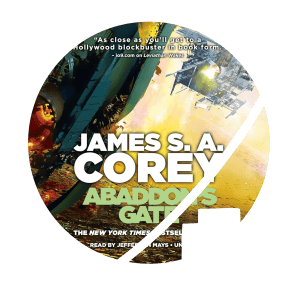A curated Collection of Fantasy and Science Fiction Media
Recent Updates
- Dungeons and Dragons Actual Play series on Twitch and Youtube
- First streamed in 2015
- DM'd by Matthew Mercer
- Starring Ashley Johnson, Travis Willingham, Laura Bailey, Liam O'Brien, Taliesin Jaffe, Marisha Ray and Sam Riegel

I’m writing this review as I’ve recently finished watching Critical Role’s second campaign: The Mighty Nein. In addition, I’ve watched more than half of their Vox Machina campaign, a score of one-shots and a great variety of their content that had nothing or little to do with D&D at all. As can be surmised from my rating, I enjoyed it all.
In a way, it is odd to rate Critical Role -by now a full-fledged company- as a whole, instead of their individual productions. However, there is a good reason for this. Any appreciation of Critical Role’s content, I believe, depends on the degree in which you enjoy its people. They are really the core of it all: a group of friends thriving in each other’s company. Not the games they play. Not the stories they tell. If you don’t like the individual quirks and the inside jokes of Critical Role’s cast members, you miss out on half their charm.
The cast and crew of Critical Role are extremely professional in what they produce nowadays (the earliest episodes of the Vox Machina-campaign seem rather outdated and clumsy in comparison). The production value is high. However, because Critical Role consists of a friend group, it is important to remember that they value their own enjoyment highly. Although they are very mindful of their public, they don’t necessarily cater to their audience as most other entertainment branches do. It’s easy to forget that you’re not watching theatre, but games in which improvisation and the randomness of die rolls play an important part. As such, it’s hard to rate Critical role as any other medium, such as a book or a film.
With those caveats out of the way, why do I love Critical Role so much, apart from the people at its core? Well, that has certainly to do with their D&D campaigns. The cast members are all extremely talented storytellers, worldbuilders, (voice-)actors and creators (so much so even, that there are unbelievers who claim that all their content is scripted, somehow). With roleplaying sessions that last 3 to 4 hours on average, their D&D episodes differ little from theatre as far as the experience is concerned. There were times I cried, times I laughed till I cried, and times I sat at the edge of my seat in anticipation of thrilling events. Some will say that the episodes are too long and should be edited, but I’m not of that opinion. After all, it is the little silent moments in between, the moments of strong emotions and bumbling with rules or story developments, that remind you of the magic that is unfolding before your eyes.
Is Critical Role for those who have no prior knowledge of D&D? The honest answer is, I don’t know. Similarly, I don’t know if people without a vivid imagination will find Critical Role to their liking. Most of their content contains very little visual stimulation, apart from their own acting. However, I do know that Critical Role is excellent in what they do: improvisational storytelling, with lovable life-like characters and clever storylines. If this sounds appealing to you, you should at least give their content a try.

Not to brag, but I started watching Critical Role back when they were still under Geek & Sundry, and their production value was Not Good. Still, I was hooked immediately.
At the time, I was already familiar with D&D, having played for a couple of years at this point. What intrigued me was that the way the Critical Role cast plays D&D is very different from what I’m used to in my own games. All of the players are voice actors. As actors, they are very good at fully inhabiting their characters. Their Dungeon Master Matt is insanely good at world-building and leading the game.
Vox Machina
I watched the entirety of campaign one. It starts off a little crusty in terms of production quality, but the audio and video quality improves pretty quickly. The first couple of episodes aren’t that bad, they’re just not what we usually expect from the content we watch nowadays.
In terms of the story, the Vox Machina campaign is pretty “generic” fantasy featuring some pretty generic characters. That’s not a bad thing, though! It makes it easy to understand what’s going on, especially when you consider that the story is a continuation of their home game, and we are literally dropped in the middle of the campaign.
Whilst generic, the Vox Machina campaign tells a very compelling story with some super emotional moments, as well as some very funny ones. I think fans of fantasy like the Lord of the Rings would love it.
The Mighty Nein
With their second campaign, the party clearly felt more confident in their ability to tell a story through D&D. I was worried I wouldn’t like the characters as much as I liked Vox Machina, but the cast quickly proved that they weren’t one trick ponies.
The Mighty Nein campaign is a lot for intentionally funny than Vox Machina, which I really enjoyed. Unfortunately, I didn’t end up finishing this campaign, and I haven’t gotten around to watching Hell’s Bells either. It just takes… so much time.
Critical Role episodes retail at 3 to 5 of the few hours you get to spend on this green earth. The full Vox Machina campaign takes 447 hours, and the Mighty Nein takes 556 hours to complete! I used to watch while doing other things, like drawing or sewing. Even while doing that, it was impossible for me to keep up with Critical Role and also watch literally anything else. I had to make a choice, and unfortunately, that meant quitting Critical Role.
I do like to occasionally check in on what they’re doing, like their animated series The Legend of Vox Machina, but I don’t expect to ever start watching the main campaigns again.
If the time investment isn’t enough to scare you off, I really do recommend checking Critical Role out!
If you’re new to D&D, you may want to start with the Vox Machia campaign (or even Dimension 20’s Fantasy High, or their series Dungeons and Drag Queens, which both feature first-time players). However, with both campaigns I’m confident you’ll pick up the rules fast enough. And let’s be honest, you really don’t need to know all of the rules of D&D to enjoy watching other people play it.
- Book written by Frank Herbert
- Published 1969
- Part two in the Dune Chronicles


Imagine having to write the sequel to Dune – if you have already written the best novel in all of science fiction, what are you ever going to add?
In Dune Messiah, Frank Herbert takes up the gauntlet and writes a fascinating sequel that shifts the style of the saga and completes many of the story arc he deliberately left unresolved at the end of Dune. And while Messiah takes away some of the mystery that made Dune unique, it is also a very satisfying continuation that gives the reader more of the worldbuilding that fans of Dune crave.
What do I mean, Dune Messiah takes away some of the mystery?
As I’ve stated before, one of the reasons Dune is so great is that Herbert feels comfortable leaving some elements of the worldbuilding un- (or: under)explained. As a result, the reader gets to guess or speculate or fill in blanks, which I think is a relatively rare experience in the speculative genre where over-analysis by fans and the fear of ‘plot holes’ causes many modern authors to feel the need to produce a ‘waterproof’ setting.
By necessity, however, Dune Messiah picks up some of the loose ends at the end of Dune which were left open to interpretation, and starts tying them up. And while I think Herbert delivered on the expectations and getting to actually read about Paul’s inevitable fate unfurling is fascinating, one could make an argument that Dune is perhaps at its best, has the most literary appeal as a standalone novel.
Having said all that, Dune Messiah is still a great read, that has almost everything that makes Dune so great: cloak and dagger, palace politics, orientalist opulence, ultra-smart characters, conversations like duels, religious frenzy, manipulation, clash of cultures, the machinations of fate and the effects of knowing the future.
The only thing missing is the focus on the planet Arrakis itself: while it still features prominently, a lot of the worldbuilding legwork has already been done by the first instalment, meaning that there is simply a little less to develop. Then again, compared to most speculative fiction that is not Dune, Herbert still shows why he is considered one of the best worldbuilders ever to build worlds.
And with such a great canvas, it really doesn’t matter that the background is somewhat familiar. The power struggles and Paul’s emotional journey are as gripping as they are in Dune. And for anyone who felt that Dune’s open end left too much of the story untold, Dune Messiah is guaranteed to deliver a fulfilling conclusion.
Although, conclusion… Perhaps it is time I start reading Children of Dune…
Tagged:
See also:
- Movie directed by Gerard Johnstone
- Starring Allison Williams, Violet McGraw, Amie Donald, Ronny Chieng and Jenna Davis
- Released 7 December 2022
- Runtime: 102 minutes

Don’t tell anyone, but secretly I am a scaredy-cat. When watching horror, I will startle at lame jump scares. My ultimate weakness? Body contortion and unnatural movements. If an entity twitches in an inhuman way, I will make noises and grab the nearest pillow (or human) to try and control my limbs. Usually, because I’m not the bravest when it comes to horror, I only tend to watch it with others, which doesn’t occur very often. However, for M3GAN I was willing to make an exception. I’m glad to say I didn’t come to regret this decision.
When I first saw the trailers for this movie, I was already charmed by the concept. Though I suspected the plot would eventually turn into a killer-robot story, the idea of a caretaker robot that (somewhat unhealthily?) bonds themselves to a child (and vice versa), is something I like. The classic ‘what is humanity?’ question etcetera.
I was pleasantly surprised to see that M3GAN did not only stick to the AI tropes you might expect, but actually made the effort to tackle some emotional themes. How do you move on from loss? And how healthy is our relationship with technology nowadays? This movie knows when to rely on tropes and when to do its own thing.
Of course, M3GAN is a horror movie. However, it is one even I could handle quite okay. This movie also has a lot of humour in it that helps you move on from the horrific elements. This, combined with the surprisingly deep themes and a strong soundtrack is enough for me to recommend M3GAN to anyone who wants to try their hands at a clever horror movie that isn’t too gruesome.
“You shoot me down, but I won’t fall. I am titaaaaaniiiiiuuuum…”
See also:
No posts found!
- Book written by John Shirley
- Published 19 July 2011
- Prequel to the BioShock-series

Listened to the audiobook with Jeffrey Kafer. Narrator was so-so.
When I originally played BioShock, it was one of the coolest games I’d ever played – and to date, it certainly remains one of the most imaginative worlds I’ve ever had the pleasure to digitally visit. So when BioShock: Rapture popped up as a new addition in my audiobook app, I was immediately tempted.
Now, I know that video game tie-in novels have a terrible reputation (probably an even worse reputation than video game adaptations of blockbuster movies!), but given the great storytelling in BioShock, I figured I’d give it a go anyways.
BioShock: Rapture is a prequel to the BioShock video game, in which the city of Rapture has descended into chaos by the first time you visit it. The novel tells the story of Rapture’s origin, and so it gives you a peek of what the city was like before everything went to hell. A small window on the potential of Andrew Ryan (the city’s founder and main financier)’s great vision.
However, the reader never gets to spend much time in a flourishing Rapture, because extreme right-wing ideology puts the underwater city’s social structure under just as much pressure as the 6.000 feet of ocean water weighing down on its domes and pipes.
Shirley did a good job of capturing the game’s themes and political message. Unfortunately, there is just not a lot of tension in the book for anyone who played the video game: you know exactly where the story will end up; and even most of the novel’s main characters are taken directly from the video game. BioShock has phenomenal environmental storytelling, with little tid bits and audiotapes dropped everywhere to tell a story of a desperate population and a city in decay. It was one of the elements of the game I enjoyed most. As a result, the novel brought me hardly anything new. It makes me wonder whether reading it without having played the game might make for a completely different experience.
My guess is that a lot of elements in the book would be rather confusing. Video games operate under different rules than other stories: you have respawn points, mana bars for your ‘magical’ powers, teleportation and other weird abilities. In the game, there is always some level of ‘ludo-narrative disconnect’ in which the player accepts that certain elements of the world exist because of gameplay reasons and understands that they are not supposed to question them too deeply.
Shirley has made an effort (and who knows, he may have been contractually required) to include every. single. one. of the game’s outlandish ‘magical’ powers, every location and character, every weird technology. Frankly, it feels pretty forced, and makes me believe that the novel would have benefitted from a slightly more liberal interpretation of its source material.
That might also have opened up some more room for elements which I would have loved to receive more attention, such as developing the characters, exploring the day-to-day lives of Rapture’s inhabitants, and Rapture’s relations with the rest of the world.
At the end of the day, though, I think I should probably not hold BioShock: Rapture up to the same standard that I would a stand alone novel. It is intended to evoke recognition in folks who played the game, and to underline the game’s political message. It does so very well. And for a video game tie in novel, BioShock: Rapture exceeds expectations.
On a side note, Shirley is an interesting writer – I’d never heard of him before picking up Rapture, but after some googling I see that he has a long service record, including a long list of video game- and other franchise tie-in novels, screenwriting credits and praise from the likes of William Gibson and Roger Zelazny. It just seems he’s never quite managed to get his work to surface in the mainstream.
Tagged:
See also:
- Movie directed by Nick Bruno and Troy Quane
- Based on the Graphic Novel by ND Stevenson
- Starring Chloë Grace Moretz, Riz Ahmed and Eugene Lee Yang
- Released 30 June 2023
- Runtime: 99 minutes

I’ve been familiar with ND Stevenson since his appearance on an episode of Critical Role campaign one. I’ve since watched his show She-Ra and the Princesses of Power, which I LOVED, so obviously I had to check out the new Netflix movie Nimona, based on his graphic novel of the same name, as well. I’m not usually one to watch something on the day it’s released, but somehow I managed this time!
I really didn’t know what to expect from this movie based on the trailer. I remember it establishing that Nimona could shapeshift, but I didn’t recall much else. To be honest, a lot about this movie took me by surprise. At the start of the movie, there are a lot of tone shifts that feel odd. I only realised later on that Nimona is based on a graphic novel, which definitely explains it. I have to admit I haven’t read the graphic novel, but often, they have a lighter tone than one would expect from a full-length movie. Nimona deals with a couple of heavy themes, so it was a little bit jarring when the character of Nimona herself was so incredibly blasée about it all.
Nimona features a really fun cast of characters. Two main characters are explicitly stated to be queer, but it’s not framed as an obstacle or as something that isn’t accepted. The voice acting is stellar, and the animation is unique and nice to look at. The story is also great, but it did leave me a bit confused for the first half of the movie.
To me, it almost felt like Nimona didn’t belong in the story she was in. She kind of reminded me of how a young fanfiction writer might rewrite their favourite book but include themselves as an important character. Her role in the story definitely becomes apparent as the movie progresses, but in the first half of the movie it feels like she is this weird supporting character and also somehow the movie is named after her?
Looking back, I don’t mind the fact that Nimona’s inclusion in Ballister’s story feels strange at first. Whenever a piece of media has LGBTQIA+ representation, there will be people complaining that the queer characters are “shoehorned” in, and that there’s no narrative reason why a character would be queer. The truth is, of course, that queer people have always existed, and don’t need a “reason” to be included in a story. Sometimes things just happen to queer people – I know, crazy!
With its many references to changing one’s shape and being accepted for being different, the movie is a clear Transgender allegory. The metaphor is very hard to miss (at least for those familiar with LGBTQIA+ issues), yet it’s still dealt with in an incredibly subtle and elegant way. Children might miss this part of the story entirely, but no one could fail to see the moral of the story: that we should accept people for who they are. That we shouldn’t let others tell us who should be treated fairly and who should be kept behind a wall.
Also, did I mention that I love stories that are both Sci-Fi and Fantasy simultaneously? That stuff’s rad as hell.

I’ll let you in on one of my reviewer secrets today. The difference between 4 stars and a higher amount is mostly dependent on if a story was able to make me cry or not. Now on to the actual review of Nimona…
All I knew of Nimona was that it was originally a graphic novel by ND Stevenson, and that this graphic novel was well-loved and – very likely – queer. Of course, this was enough for me to be interested in the adaptation. When the trailer launched, I didn’t learn much of what I could expect, but I was ready to go with whatever flow would present itself.
In total, I believe this film broke my heart approximately ten times, mainly in the first fifteen minutes and the last fifteen minutes of the story. It seems the emotional themes hit close to home. Nimona is a story about wanting to belong. Wanting to be seen for who you are, unhindered by the (pre)conceptions of others. It’s also a story about the dangers of blindly holding unto black and white thinking and the desire to put people into categories, even if these categories aren’t sufficient.
The cute and likeable characters help explore these themes in an elegant way. Poor Ballister from humble origins, who’s been trying to prove his worth since his youth. The titular Nimona, who’s simply ‘Nimona’ and longs for some connection with the world around her. And of course Ambrosius Goldenloin, who just has an amazing name that I wanted to point out.
The plot of this film is high-tempo with at times an episodic feel because of the intermediate climaxes. It has a weird pacing at times, however, one that fits Nimona’s chaos. As such, I wasn’t too bothered by it. I would have liked the movie to be a little longer, but on the whole it’s very efficient in its storytelling.
Despite its heavy themes, the flashy and colourful animation of Nimona is a joy to look at. Additionally, there were multiple times the humour had me laugh out loud. The ‘freestyle jazz’ was a winner for me.
Living can feel very lonely at times. The news is often grim nowadays, especially when you belong to a minority, such as the LGBTQIA+ community. Nimona is a reminder that you matter, and that you should not give up hope for a better tomorrow.
- Book written by Kim Stanley Robinson
- Published September 1992
- Part 1 of the Mars Trilogy
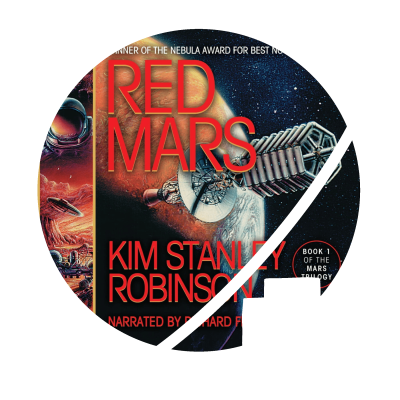

Listened to the audiobook with Richard Ferrone – fit the book’s style very well, and managed to really capture some of the characters.
Now that I’ve finally read one of Kim Stanley Robinson’s books, I’m confused as to why I haven’t read him before. Especially the Mars-trilogy has been showered in all of the important prizes science fiction can win: the Hugo, the Nebula, the Locus, etc. And though the book is nearing its 30th birthday, it feels like it could have been written last year. The Mars-trilogy is not obscure among enthousiasts, but it doesn’t get the mainstream love it deserves – so this is me heartily recommending Red Mars to you!
Red Mars is perhaps best described as a mix between the hard sci-fi and refined technological descriptions of The Martian on the one hand, and a political thriller like a Ludlum or a Baldacci on the other (though I would like to note an important difference between Red Mars and The Martian, which is that, unlike Weir, Robinson gets the international space law right! Hurray!).
Red Mars describes the colonisation of Mars from the first 100 colonists all the way up to the existence of cities with factions and political struggles. It jumps forward in time several times to cover the next phase in the colonisation process, and every time it does so it shifts perspective from one of the first 100 to the next, exploring their motivations, relationships, and politics. In this way, each of the time jumps adds another layer of depth to the story’s main throughlines.
In particular, the interpersonal relationships between the leaders of the first 100 colonists and their disagreements over the terraforming process are built up masterfully over the book in this way. Similarly, the time jumps allow Robinson to weave new technological and environmental concepts into the narrative and focus on new themes.
The result of the time jumps is also that the sections of the book feel a little like separate short stories, with a relatively minimal overarching plot. Similarly, while there are a few tense moments in the book, it you are not reading it for its action scenes or its edge-of-your-seat suspense.
This is not meant as a criticism, since the calm style fit the long timeline, the plots of the individual sections are engaging and the character-driven developments made me feel emotionally engaged without the plot needing to constantly deliver mortal danger to the heroes. The mix of (political) character drama and hard sci-fi is unusual, however, and makes for a surprisingly literary read.
All in all, Red Mars was a pleasant surprise to me and comes highly recommended. I’m sure to be listening to the next parts in the trilogy in the coming months!
Tagged:
See also:
© 2023 – Escape Velocity – A Curated Collection of Fantasy and Science Fiction Media
Privacy Overview
| Cookie | Duration | Description |
|---|---|---|
| cookielawinfo-checkbox-analytics | 11 months | This cookie is set by GDPR Cookie Consent plugin. The cookie is used to store the user consent for the cookies in the category "Analytics". |
| cookielawinfo-checkbox-functional | 11 months | The cookie is set by GDPR cookie consent to record the user consent for the cookies in the category "Functional". |
| cookielawinfo-checkbox-necessary | 11 months | This cookie is set by GDPR Cookie Consent plugin. The cookies is used to store the user consent for the cookies in the category "Necessary". |
| cookielawinfo-checkbox-others | 11 months | This cookie is set by GDPR Cookie Consent plugin. The cookie is used to store the user consent for the cookies in the category "Other. |
| cookielawinfo-checkbox-performance | 11 months | This cookie is set by GDPR Cookie Consent plugin. The cookie is used to store the user consent for the cookies in the category "Performance". |
| viewed_cookie_policy | 11 months | The cookie is set by the GDPR Cookie Consent plugin and is used to store whether or not user has consented to the use of cookies. It does not store any personal data. |







